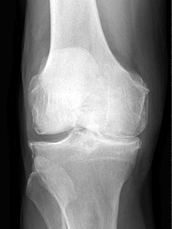Preparing for Your Doctor’s Visit
The Orthopaedic Evaluation
- A thorough medical history
- A physical examination
- X-Rays
- Additional tests, as needed
Medical History
A thorough medical history includes:
- A list of all medications you are currently taking
- Information on prior surgeries and/or treatments
- Prior diagnoses
- Family history
The information that the surgeon gathers during the medical history usually suggests the possibility of several different diagnoses.
Physical Examination
The physical examination enables your surgeon to evaluate important aspects of your joints, including:
- Size and length
- Strength
- Range of motion
- Swelling
- Reflexes
- Skin condition
X-Ray Evaluation
X-Rays help show how much joint damage or deformity exists. An abnormal X-ray may reveal:
- Narrowing of the joint space
- Cysts in the bone
- Spurs on the edge of the bone
- Areas of bony thickening called sclerosis
- Deformity or incorrect alignment
Additional Diagnostic Tests
Occasionally, additional tests may be needed to confirm the diagnosis. These may include:
- Blood tests
- Urine analysis
- Analysis of joint fluid Magnetic Resonance Imaging (MRI)
- Bone scan

